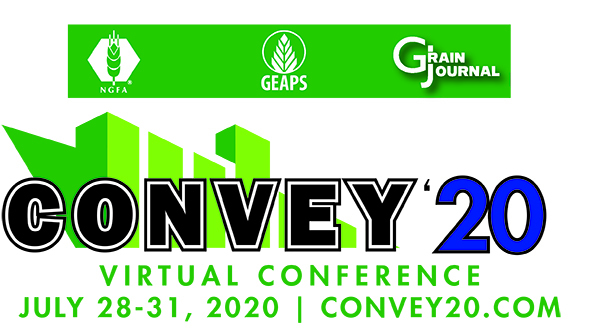How widespread is the concept of leading indicators?
I’ve seen the leading indicator concept used in other business units in the grain industry, and now it’s starting to work its way into environmental health and safety (EHS). We’ve been using leading indicators at Gavilon Grain for a number of years. Judging from talks with other grain companies, it’s fairly new, and a lot of us aren’t really sure how to go about implementing leading indicators.
What is the concept?
There are two different types of metrics for measuring performance, lagging and leading indicators. What differentiates them is a lagging indicator tends to be retrospective, based on incidents that have occurred already. Leading indicators, on the other hand, are considered predictive and forward-looking. What separates leading indicators is that they are in our direct control.
Can you give us some examples of each type of indicator?
In some instances, a lagging indicator can be a suitable way to evaluate things, like how good a driver your teenager is or batting average for a baseball player.
Where lagging indicators fail are making that connection between driving records or batting average and how to improve it. Telling your teenager not to get into an accident and to drive safely is great, but it doesn’t directly control that situation. So that’s where leading indicators come in.
Leading indicators, when properly selected, should be based on the parameters that directly impact the batting average such as practice time, studying videos of pitchers, and exercises that improve body strength. The same rationale applies with your teenager. A leading indicator might be hours of simulator time, driver education classes, elimination of distractions, or just taking away the car keys.
Can this concept be related to measuring safety in grain operations?
A simple safety example is an increase in the percentage of employees wearing their safety gear, the leading indicator, should reduce the number of employees injured, the lagging indicator. Most of the leading indicators are going to be things you control at the site level. I personally use lagging indicator results to identify good leading indicators.
So lagging indicators rely on past data that can’t be directly controlled. The total incident rate (TIR) is probably the most common lagging indicator that we use. You can also look at detailed accident data such as back injuries or injuries from falls to attempt to illuminate underlying issues. On the environmental side, you have spills and releases, and you can include violations.
One of the issues with lagging indicators is they don’t have enough data to be statistically significant. So the first time your teenager drives a car, he gets into an accident. If you extrapolated this data, you would assume that the teenager would get into an accident every time he or she drove.
If you dig deeper into lagging indicators, you can eliminate some types of injuries and see a clustering of others. For example, if you know hand injuries are an issue, you can devise corrective measures to prevent them, and these measures can form the basis for leading indicators. Or you can start tracking directed corrective measures using leading indicators such as surveys on the percentage of employees wearing gloves, action plans for guarding pinch points, and the number of employees receiving training in the use of hand tools.
Another problem is that too much emphasis on lagging indicators can lead to underreporting of injuries or near-misses, especially if you have incentives associated with those metrics. The Occupational Safety and Health Administration (OSHA) may consider your incentive program illegal, if you use lagging indicators such as TIR. OSHA has made it clear that it does not want anyone so much as throwing a pizza party for employees if they don’t meet certain incident thresholds.

How are leading indicators used properly in a grain-related workplace?
One formal definition of a leading indicator is proactive, preventive, and predictive measures that monitor and provide current information about the effective performance activities and processes of an EHS management system that drive the identification and elimination or control of risk in the workplace that can cause incidents and injuries. They motivate behavior, commitment, and improvement.
When employees can control the situation, they’re more likely to behave and commit to the safety process you have in place, unlike a situation where you tell people, “Hey, you need to lower your TIR,” and you don’t have a direct guidance on how to do that. If you set up the right leading indicators, you can anticipate and prevent or eliminate risks and losses.
How hard is it to identify leading indicators?
Coming up with some leading indicators isn’t that hard. Determining that your leading indicators are making a difference can be more difficult. Some examples of leading indicators include: the percentage of employees completing behavior-based safety measurements, audits completed on time, percentage of employees participating in perception surveys, the frequency of inspections, percentage of investigations completed for incidents, number of employees participating in meetings, and hours of training. You can combine some of these.
Something to note, though. If you’re gong to do an audit or perception survey, you focus on number completed or number of employees participating but not the score itself. An audit score or perception survey score would be considered a lagging indicator.
At Gavilon, we use on-time completion of inspections, maintenance, training, action plans, and incident investigations as leading indicators. We do not use incidents. We don’t want to discourage people from reporting. Instead, we track the completion of these investigations and any action plans associated with them.
At Honeywell, according to a survey of 18 health and safety practitioners in various industries on leading indicators, leadership is expected to walk the site at least once weekly with the sole purpose of addressing health, safety, and environmental conditions noting any deficiencies and assuring that appropriate corrective actions are taken. Twice per week, the managers visit work crews at the start of the shift to participate in their safe work planning process to identify hazards and risk mitigation efforts, observe and record conditions in the surroundings, and come to a consensus on when the work is to be performed.
At Gavilon, we use on-time completion of inspections, maintenance training action plans, and incident investigations as leading indicators. We do not use incidents. We don’t want to discourage people from reporting.
OSHA also recognizes the benefits of leading indicators in its document titled “Using Leading Indicators to Improve Safety and Health Outcomes.” (See www.grainnet.com/OSHAleading indicators.) One example is a company with a number of slip, trip, and fall incidents that determined that the primary cause was due to cluttered floors. To mitigate this issue, they established a free and clear floor inspection and cleaning as leading indicators and set up a goal of doing these daily.
So what indicators are you going to come up with? One way is to look at your EHS goals. Look for metrics, and align with those. If your concern is combustible dust, you might want to look at inspections, and preventive maintenance of baghouses and other critical safety devices, completion of housekeeping activities, and training.
Can you give some other recommendations on the use of leading indicators?
Use SMART metrics. If you get heavily involved in performance management activities, you may have seen this acronym.
- S stands for specific. Everyone who’s involved in it needs to know exactly what is expected and what that leading indicator represents.
- M is for measurable. This has to be something you can quantify and track. You can’t just use “complete most inspections on time.” You need to use numbers, like 95% of inspections to be completed on time.
- A stands for accountable. You need to identify who is responsible for completing tasks associated with leading indicators, as well as who will document the completion of those tasks.
- R is for realistic. Know what results can be achieved reasonably given the available resources.
- T is for timely. You want to have the leading indicator evaluated frequently enough that you can see the results.
Just ask yourself, can you measure it, and does it give a clear signal of being important to safety, health, and environmental?
If you dig deeper into lagging indicators, you can eliminate some types of injuries and see a clustering of others. For example, if you know hand injuries are an issue, you can devise corrective measures to prevent them, and these measures can form the basis for leading indicators.
So you have some leading indicators set up and some measured results from those indicators. What’s next?
Will the results be used for site management? Should the site-level scores be rolled up and used for the business unit? And how are you going to disseminate this information?
Posting the scores for all sites can lead to some healthy competition. By posting the results of all the leading indicators you show that it is achievable to have a score of 99% or 100%. They may have thought they made the minimum goal of 90%, but if they see others have a higher score, maybe they’ll try a little harder and improve their score.
If a leading metric is not providing value or guidance, you can stop using it. It’s hard not to think, “I failed. I came up with this metric that I thought was going to be good, and it wasn’t.” But why keep beating a dead horse? If it’s not effective, it’s not helping, so move on.
What differentiates them is a lagging indicator tends to be retrospective, based on incidents that have occurred already. Leading indicators, on the other hand, are considered predictive and forward-looking.
What about tying compensation to performance on leading indicators?
Some leading indicator guidance recommends against tying performance to leading indicators due to the potential for rigging the data. If we have to worry about personnel trying to cheat the system, we may have bigger ethical issues to worry about.
We use other leading indicators, such as profit, as incentives for personnel. So I don’t know why we wouldn’t use safety, health, and environmental indicators for that, as well. But I do think it’s better to tie incentives to leading indicators, which can be controlled, rather than to lagging indicators.
— From the September/October 2020 Grain Journal
Related Articles:
September/October 2020 Grain Journal Facility Features
Grain Talk Podcast: Rabobank's Stephen Nicholson Shares Seven Ways COVID-19 is Changing Agriculture (31:47)
Slideshow: Material Handling Products Directory at Your Fingertips



